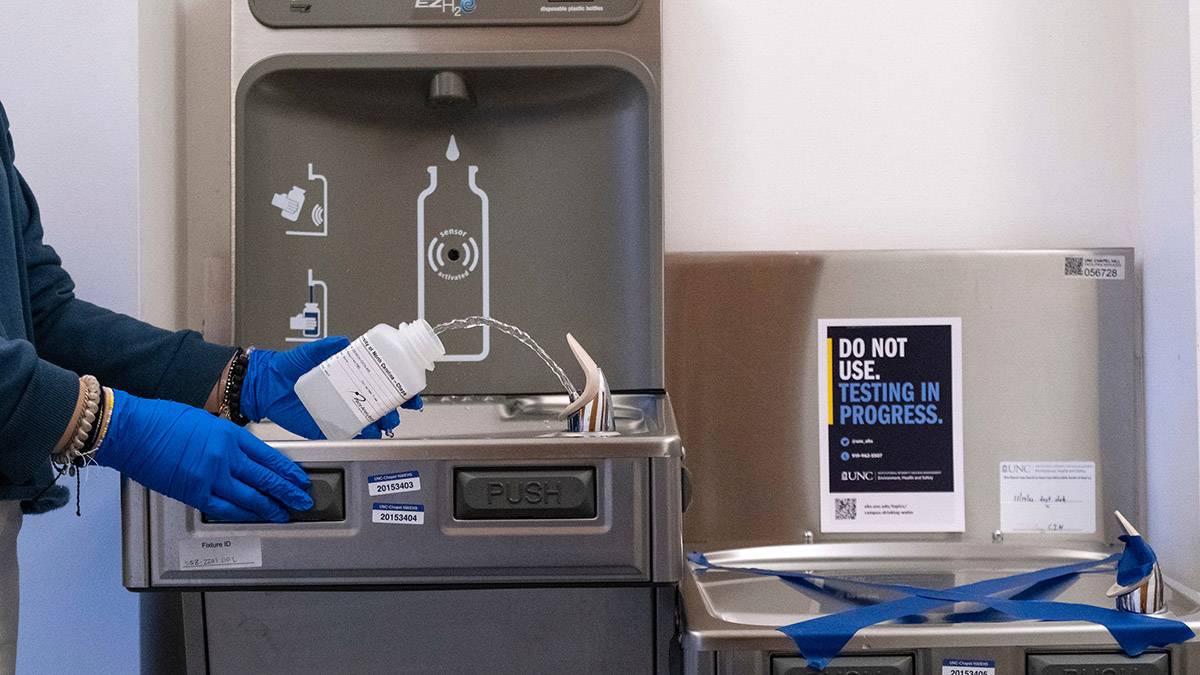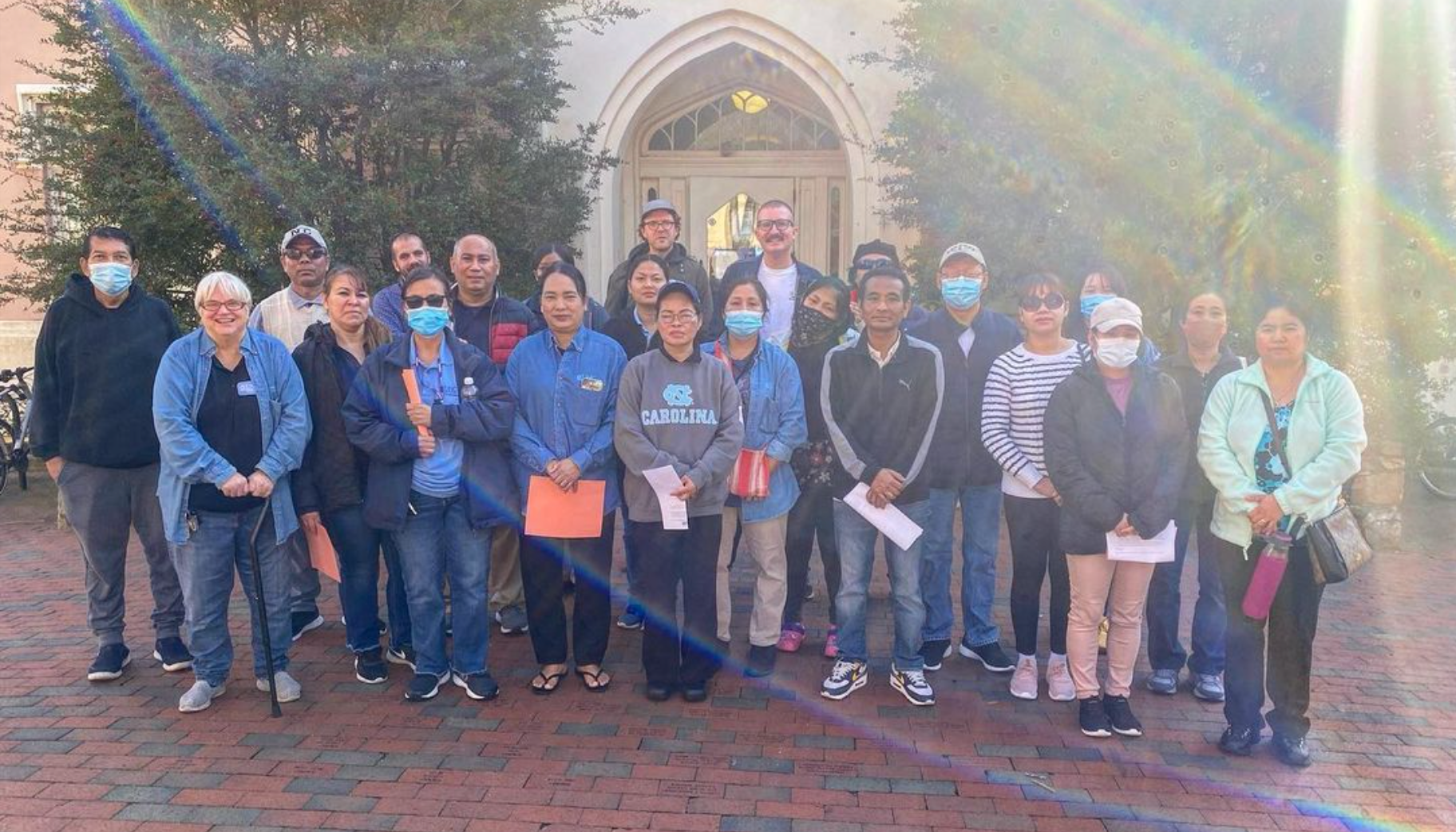The academic year is behind the UNC community, as is one of the biggest storylines to come from campus since last summer: the presence of lead in drinking water fixtures.
The university finished testing every fixture on campus in April and officials made a presentation to the Board of Trustees on Wednesday about the process, what was discovered, and where UNC goes from here.
Here are the most important numbers to know, based on UNC’s lead testing results and the university’s response to help the campus community:
—
260 buildings and 3,876 drinking water fixtures
Once lead was discovered in fixtures of Wilson Library in August 2022, UNC’s Environment, Health and Safety department alerted the campus community and began testing for lead in each fixture in university-owned buildings. The process lasted months as crews went across Chapel Hill and tested all types of facilities. In total, 3,876 fixtures in 260 buildings had their drinking water checked over the course of seven months.
420 fixtures
At final count, UNC identified 420 drinking water fixtures that had noticeable amounts of the toxic metal — which is a rate of 10.8 percent of all fixtures across campus.
During Wednesday’s presentation, the Executive Director of UNC Environment, Health and Safety Cathy Brennan said remediation and replacement work is already well underway for those affected fixtures. She said as of this week, 30 percent (126 drinking water fixtures) have been remediated so far and are no longer presenting any lead in test results. All of the affected fixtures found in Carolina Housing facilities are in that group, according to the report. Twelve non-residential UNC facilities are also 100 percent remediated.

Demonstration of gathering water sample to be tested for lead. (Photo via Jon Gardiner/UNC-Chapel Hill)
1 part per billion
Brennan told the Board of Trustees that her team is treating 1 part per billion of lead as the threshold for fixtures that will be remediated, meaning they will receive upgraded parts in an effort to stop any contamination moving forward.
“Just to note: the EPA action level for public water authorities is actually 15 parts per billion,” Brennan specified. “So, we’re actually going above and beyond [with our remediation].”
29 student volunteers
While the UNC Environment, Health and Safety team did the majority of testing, they were not alone.
Darrell Jeter is the director of emergency management planning for UNC. During Wednesday’s presentation, he gave credit to a group of students in UNC professor and water quality expert Rebecca Fry’s class. The group of 29 volunteers helped test 19 of the campus buildings for lead over the course of 10 weeks this academic year.
“So, not only did this contribute to achieving our goal and meeting our executive priorities,” said Jeter, “but it also provided them with real-world scientific experience. We want to thank Dr. Fry and these student volunteers for their efforts on that [testing] front.”
109 student and 88 employee blood lead level tests
As one way to accommodate the campus community in the wake of the lead’s discovery, Jeter said Campus Health and the occupational health department each offered blood lead level tests. In his report, he shared that 109 of those no-cost tests were administered to students, while 88 were administered to employees who may have had long-term exposure.
UNC did not report anyone experiencing unusual results from their blood lead level tests. The service is no longer free, but can still be done through the university.
120 water coolers
Another response by UNC was alternative water options to students as buildings saw their fixtures either tested or taken offline. Jeter said the university purchased 165 water coolers and dispensers over the academic year, but ultimately only deployed 120 across campus sites. His report to the trustees said over the course of the year, those dispensers had 4,752 five-gallon refills in total.
3 years
Looking ahead, Brennan said her department will aim to regularly test buildings every three years to examine whether lead levels have increased. She added that if fixtures receive remediation or upgrades, they will be tested again no later than one year later — including the 420 fixtures identified in the 2022-23 academic year. Like in the university’s phased testing process, the older buildings on campus will draw more attention during these three-year testing cycles.
“We are going to focus on buildings constructed pre-2014 – that is when plumbing fixtures had a change in the amount of lead that could be present, so we think those are the highest risk,” Brennan told the trustees.

Spencer Residence Hall had the most fixtures return with positive lead tests, as 52 in-room sinks had traces of lead in October. (Photo via University Housing/UNC-Chapel Hill.)
—
When asked whether there is a timeline on when fixture remediation will be complete across UNC’s campus, Vice Chancellor for Institutional Integrity and Risk Management George Battle said that is still unclear.
“The testing part certainly was more amenable to doing quickly, because there’s a finite thing you have to do,” he told the board, “as opposed to filtering, changing pipes, or doing that kind of stuff. But I know [the team is] working as quickly as they possible can.”
One of the concerns UNC officials have shared through this testing process is how other schools with older buildings may have traces of lead too. When asked by trustees about what information has been shared with other schools, Chancellor Kevin Guskiewicz said he’s been in communication with several.
“I have provided a high-level overview, at the request of UNC System President [Peter] Hans, to the other system presidents,” he said. “But I think we do need to put this into a playbook-type document that we could provide for other system schools, so they can be on the front end of this [problem].”
Chapelboro.com does not charge subscription fees, and you can directly support our efforts in local journalism here. Want more of what you see on Chapelboro? Let us bring free local news and community information to you by signing up for our biweekly newsletter.










